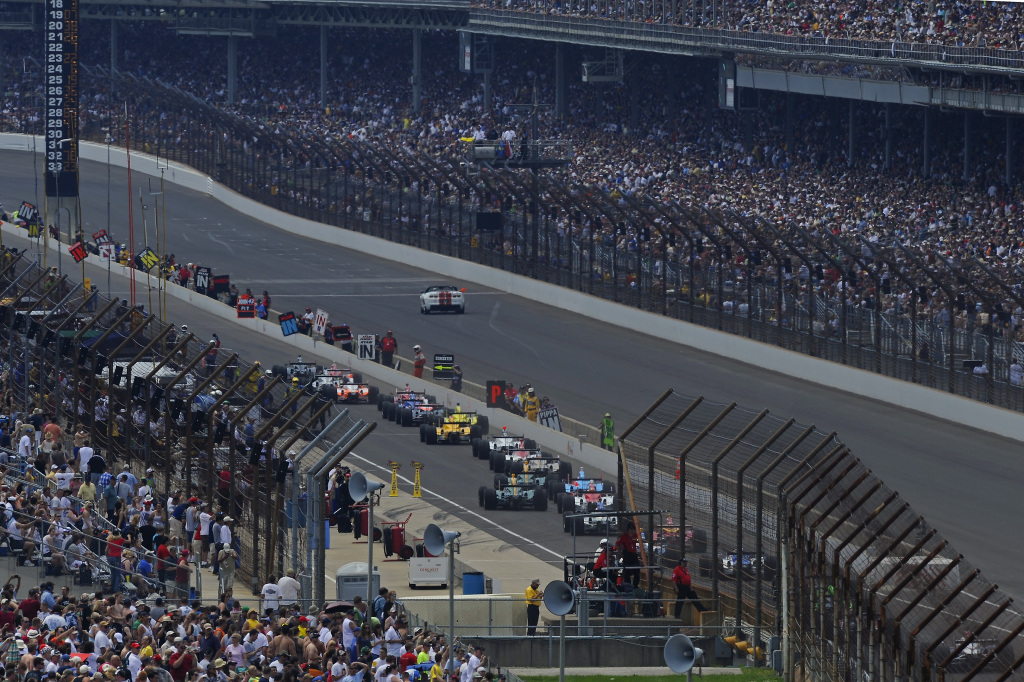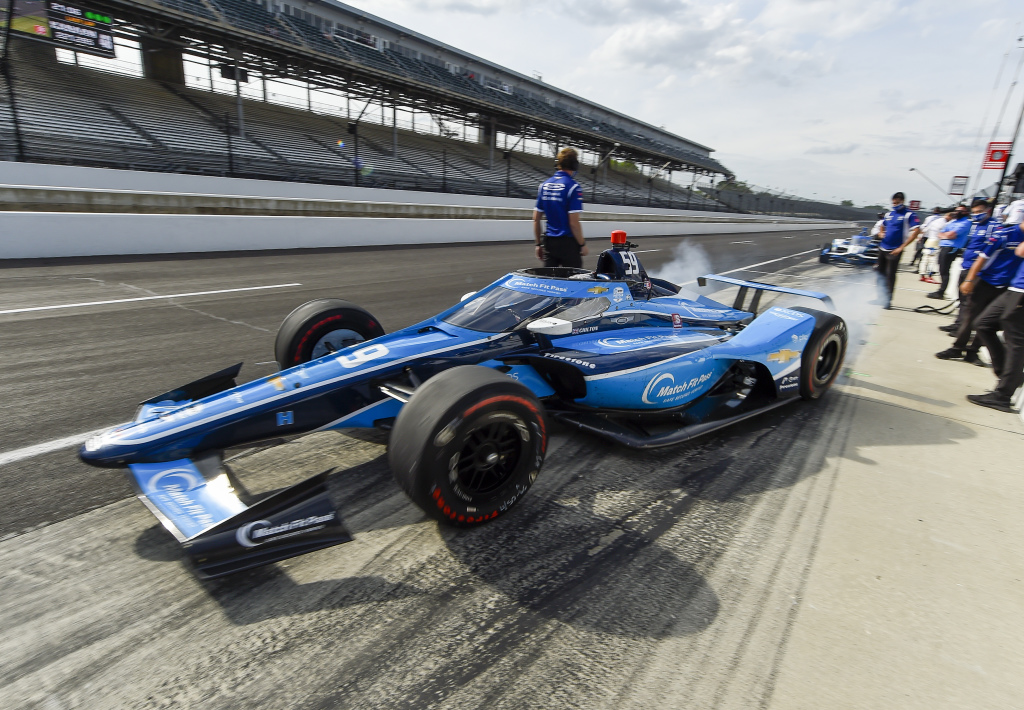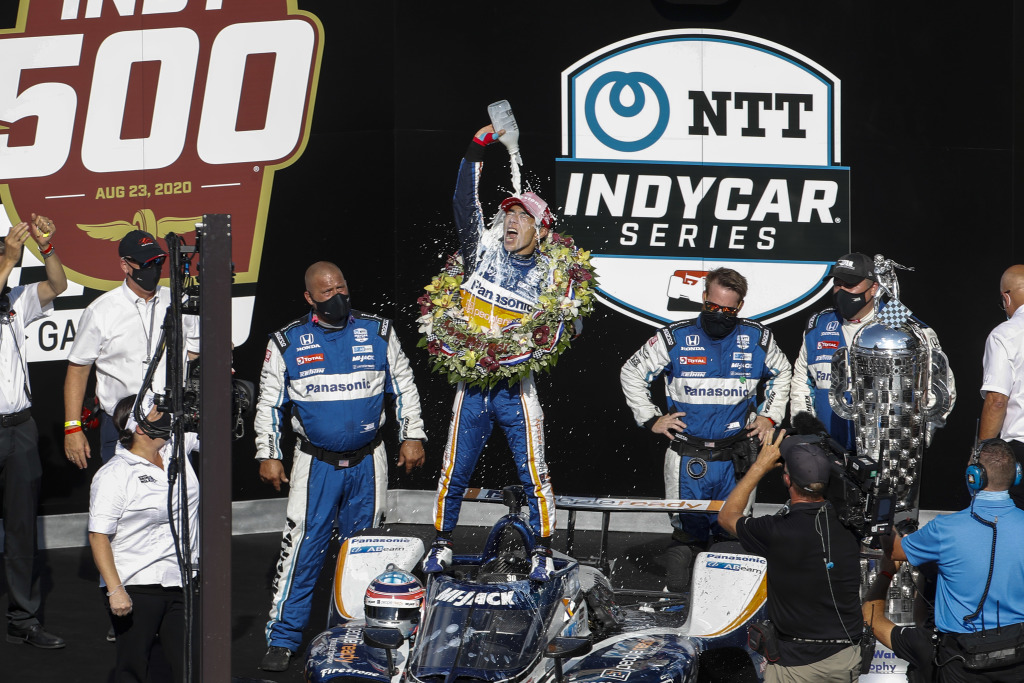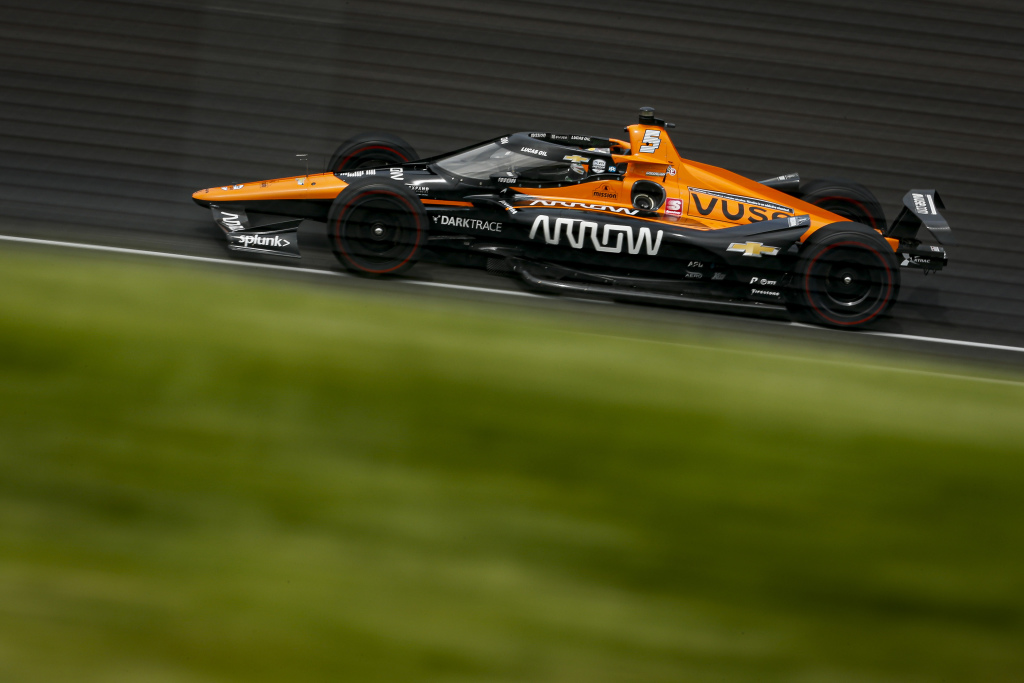
Making up part of the Triple Crown of Motorsport, the Indy 500 is one of the motorsport events of the year. Along with the Monaco Grand Prix and 24 Hours of Le Mans, it is one of the great sporting spectacles.
Yes, for many, it’s 500 laps of an oval circuit. But it’s really so much more than that. It’s a race steeped in tradition, and what may seem like a simple task really separates the good drivers from the greats.
Formula 1 drivers have been known to sit out the Monaco Grand Prix to compete in the Indianapolis race. Fernando Alonso prioritised Indy in 2017 as he looks to become the second driver in history to secure the Triple Crown.
Indy 500 guide for beginners
How does Indy 500 qualifying work?
Qualifying for the Indy 500 race is an event in itself. While most motorsport fans will be used to qualifying taking place the day before or even the same day as the race, In Indianapolis it happens the weekend before race day.
Each car will qualify across Saturday and Sunday. With the track to itself, the car will go out for two warm-up laps followed by four timed laps one-after-another. The average speed across those four laps is registered as the qualifying time.
Once every driver has set a time, they can head out onto the track to improve it. By joining the normal lane, they can queue up for another shot at improving their run. If they don’t improve, they will fall back on their initial time. However, if teams put their car in the fast lane, they will have priority running over the cars in the normal lane. But the twist is they are sacrificing the time they set in the initial runs, so may end up with a slower time than they bargained for.
The positions from 33 to 10 are locked in after Saturday’s running. Sunday is all about setting the first three rows and pole position in the Fast Nine Shootout. The Saturday times are disregarded, and cars only get one shot at setting a time.
How does the Indy 500 race work?
The race itself is quite simple, in that it is 500 laps of the Indianapolis Motor Speedway. But there are plenty of differences in how a Formula 1 race works.
The start of the race will be a rolling Indianapolis start. Typically, in Indycar, this entails the cars lining up two-by-two on an out-lap before approaching the green flag. This starts the race and the cars can jostle for position. This is similar to a start at Le Mans or in WEC. But at the Indy 500, the cars line up three-by-three. This makes for a huge spectacle as the cars fill the width of the tarmac along the track.

Copyright: Motorsport Images
Yellow flags will play a huge part in the order of the race. Unlike in Formula 1, a yellow flag will automatically bring out the pace car. This slows the pack down and bunches them up while the danger is cleared. Under a yellow flag, the lap time is considerably slower, so it’s common to see almost all the drivers pit during this time. While a Formula 1 race will usually see one or two stops in a race, each car at Indy500 will pit between five and ten times during the race.
This is to refuel and fit tyres, of which there are two types: red tyres which are softer but degrade quicker, and longer-lasting but slower white tyres.
As the cars can refuel during the race, however, the tyre strategy is only half the battle. Being able to cruise in the slipstream of the car in front during a race that is almost entirely full throttle will save you fuel. You could end up being able to last numerous laps longer than the leader, meaning being in front isn’t always the best place to be.
Are all the cars the same?
Each car on the grid at IndyCar uses the same chassis: the Dallara Dw12. This chassis is used by every car, so the bodywork and aero packages are identical. This differs from Formula 1, where every team develops unique chassis and bodywork packages they believe will be the fastest.

Copyright: Motorsport Images
The engines are 2.2-litre twin-turbocharged V6s, whereas F1 cars run 1.6-litre four-stroke turbocharged V6 engines. The IndyCar teams run either a Honda or Chevrolet engine, and they produce up to 700bhp.
The team do develop some of their own parts for the cars, including brake ducts and suspension elements.
Why does the Indy 500 winner drink milk on the podium?
Most motorsport winners celebrate with a swig of some cold, sparkling champagne. But the winner of the Indy 500 has no such pleasure. Well, not after a pint of milk on the podium first, anyway.

Copyright: Motorsport Images
It’s a tradition that dates back to 1933. Winner Louis Meyer won the race and, on his mother’s guidance, asked for buttermilk after the five-hour event. He won the race three years later and, once again, asked for buttermilk. A marketing executive for a dairy company was watching with a keen eye and realised this could be a great opportunity.
From 1938 to 1941, every driver swigged milk on the top step but from 1947, they began drinking water from a silver cup. So from 1956, the winner was offered a $400 bonus by the American Dairy Foundation if they drank milk after their win. Now, that figure is more like $10,000.
And thus it became a tradition. In 1993, Emerson Fittipaldi declined the milk in favour of orange juice, given he owned orange groves. At the next race, having won the biggest race in America, he was booed by the crowds. That’s how important the milk is.
Ahead of the race build-up, look out for the special drivers’ line-up. Rather than qualifying times or grid positions, you’ll find out what milk is on stand-by for each racer: whole, 2% or fat-free.
Who are the famous faces at the 2021 Indy 500?
You may have seen Romain Grosjean scored his first IndyCar pole position and race win recently. However, some drivers don’t enter all the championship’s races, and some will only enter the Indy 500.
Grosjean signed a contract for the road and track courses but isn’t competing on the ovals. Some former F1 names that will be in action include IndyCar regulars Marcus Ericsson, Max Chilton, Juan Pablo Montoya and the 2020 victor Takuma Sato.

Copyright: Motorsport Images
Look out for some of the titans of the Indycar series: Josef Newgarden, Will Power, Scott Dixon, Ryan Hunter-Reay and Simon Pagenaud.
Fans of F1 will also recognise the Arrow McLaren SP team. The team is known as Schmidt Peterson Motorsports, and has an agreement with McLaren racing for a joint entry in the series. This means the car carry very similar branding to the McLaren F1 team and is the team Fernando Alonso entered the Indianapolis 500 race for in 2020. That’s also stirred rumours that Lando Norris may make an Indy 500 appearance in the future.
When is the Indianapolis 500?
The Indianapolis 500 will take place on Sunday, 30th May 2021 at 5:45 pm BST. That’s 12:45 pm local time.
Qualifying for the big race takes place across the weekend 22nd – 23rd May. The whole field will battle for a place in the top nine on Saturday, with those drivers battling for pole on Sunday. The Fast Nine Qualifying starts at 7:30 pm on Sunday.
